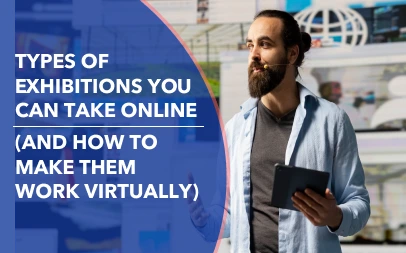How Is Augmented Reality (AR) Used in Events Today

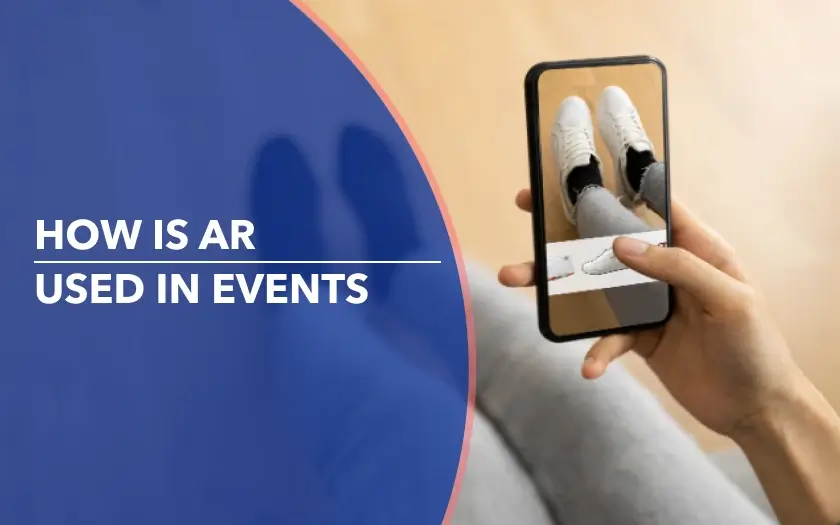
Events are no longer confined to stages, booths, or banners. They’re evolving into immersive ecosystems, where physical presence meets digital possibility. Whether it’s a branded pop-up, a large expo, or an experience hosted on virtual event platforms such as Remo, Augmented Reality (AR) is becoming a powerful tool that transforms how attendees engage with content, spaces, and one another.
But, the question remains – how is AR used in events?
From guiding foot traffic in real-world venues to layering interactive content into virtual spaces, AR is helping events break free from flat screens and static signage, and inviting audiences into stories they can actually step into. Let's dive into it!
{{table-of-contents}}
What is Augmented Reality (AR)?
.webp)
To understand AR, we need to zoom out and look at the bigger picture: Extended Reality (XR)—a collective term encompassing immersive technologies such as Virtual Reality (VR), Mixed Reality (MR), and Augmented Reality (AR). These technologies differ in how deeply they blend the digital with the physical:
- Virtual Reality (VR) replaces your environment entirely. You’re transported into a fully virtual world, shutting out the real one.
- Mixed Reality (MR) merges digital and physical elements in real time. It allows you to interact with both, like placing a virtual product on a real table and walking around it.
- Augmented Reality (AR) enhances the real world by layering digital content, like 3D visuals, information tags, or effects, on top of what you already see.
What sets AR apart is its accessibility and familiarity. Most AR activations today run on smartphones or tablets, using built-in cameras, sensors, and connectivity, just scan a QR code or open a link. WebAR (browser-based AR) has especially made waves in the event industry, offering instant access with no app download required. AR glasses, such as Meta's Ray-Bans or Vuzix, are also beginning to enter the scene.
“Mobile/web AR is being adopted more readily, because it’s functionality that everybody already has. You take out your phone, scan a QR code, and you can have an AR experience."
Kevin Joyce, CEO of Tiny Brain Ltd.
Why Use AR in Events?
AR Turns Static Spaces into Interactive Experiences
While being an emerging technology, Augmented Reality is also a creative enabler. It transforms events from static environments into layered, living experiences that captivate attendees and extend brand impact.
AR Helps You Surprise, Teach, and Entertain
In a landscape where audiences crave novelty and emotional connection, AR offers a way to surprise with unexpected interactions, educate through immersive product walkthroughs, and delight by turning everyday spaces into playful, personalized stages. From virtual try-ons and 3D demos to scavenger hunts and social filters, AR makes engagement feel effortless, yet unforgettable.
At events, where space, time, and attention are limited, AR helps brands create immersive, personalized, and measurable experiences that stand out. It’s about adding value. Whether guiding attendees, showcasing products, or delivering brand moments that stick, AR makes every square foot and every second count.
People Want to Be Part of the Experience
Audiences today want more than a seat; they want a role. They expect to interact, co-create, and walk away feeling part of the story. That’s where AR delivers. The impact is measurable. According to Snap Inc. & Ipsos. (2022):
- 67% of consumers say they’d use AR at an event
- 56% of brands already offer AR experiences
- And interacting with a product in AR can boost conversion rates by up to 94%
These figures point to a broader transformation already underway, one where digital layers quietly enhance how people move through space, engage with content, and connect with brands. For those looking to explore this shift in depth, the State of AI and XR in Events report provides a much fuller picture of where the future of XR is headed.
Mobile AR Is the Most Practical Entry Point
Despite the flashy optics of headsets and glasses, mobile devices remain the most widely adopted and most practical entry point for AR at events. The frictionless access is what makes mobile AR so powerful. It turns signage into interactive portals, demo booths into 3D showcases, and static backdrops into dynamic storytelling surfaces.
Platforms Like ARKit and ARCore Drive the Practicality
Platforms like Apple’s ARKit and Google’s ARCore, launched in 2017 and 2018 respectively, power most mobile AR experiences today. They make it possible to anchor digital content to real-world spaces in real time. For event organizers, this means lower barriers to entry, faster deployment, and an exceptional attendee experience that doesn’t require extensive app downloads or on-site hardware.
AR is Reusable, Measurable, and Cookieless by Design
AR is also data-rich by design. Every interaction, from dwell time to behavior inside an experience, can be tracked, analyzed, and optimized. With Google phasing out third-party cookies in 2024, these opt-in, first-party insights become useful and essential.
AR Can Be Reused and Scaled Easily
Unlike physical installations, AR content can be reused, repurposed, and redeployed across multiple events. A digital showroom that lives inside a phone doesn’t need to be shipped or built; it just needs a stable internet connection and a creative layer. This means AR doesn’t just wow—it works. It delivers scalable, repeatable value that grows across events.
How is AR used in Events
Here’s how AR is actually being used at events today. Each example proves one thing: when digital content meets the real world at the right moment, the experience sticks.
These examples not only show how AR can make events more useful, more fun, and easier to remember—they also aim to inspire organizers to imagine what’s possible and start implementing AR in their own events.
AR for Navigation and Wayfinding

Wayfinding at large-scale events has always been a challenge, especially when attendees are rushing between sessions, searching for booths, or trying to orient themselves in a maze of conference halls.
This is where mobile AR quietly steps in and transforms confusion into clarity.
By simply scanning a QR code or opening a browser link, attendees can unlock directional overlays that guide them in real time: arrows on the floor, floating signage above booths, or even animated characters pointing the way. No app downloads, no maps to fumble with. Just intuitive, camera-based navigation that meets people exactly where they are.
While smartphones currently dominate this use case, we're starting to see the same capability offered from smart AR glasses. In high-support or staff-only roles, AR glasses prove more effective as they offer hands-free navigation. But, this is still in its early stages.
Immersive Product Demonstrations
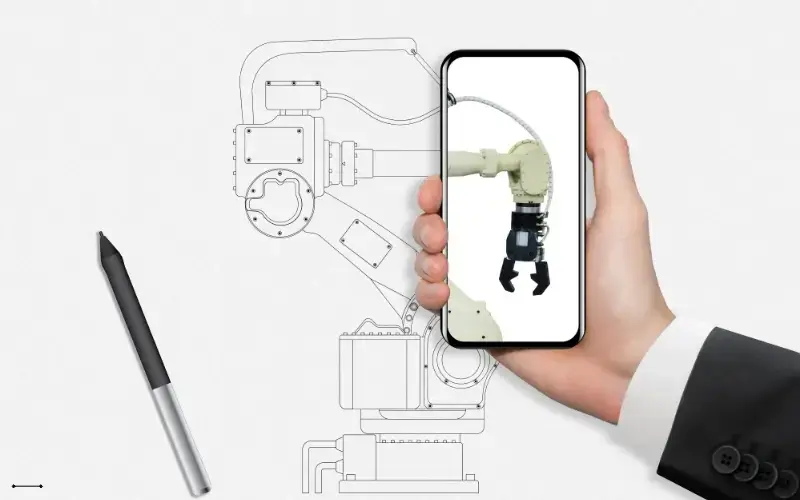
Product demos are no longer limited to what you can physically carry into a booth. With AR, the product comes to life, full-scale, fully interactive, and right in the palm of your hand.
Using a smartphone or tablet, attendees can launch detailed 3D models that they can zoom, rotate, and explore from every angle. Whether it’s a new car, a piece of machinery, or a luxury watch, AR allows people to inspect it as if it were right in front of them, without any of the shipping costs or setup headaches. One standout platform enabling this is 8th Wall.
It’s about showing more and showing better. AR helps people see hidden details, understand complex ideas quickly, and turn static displays into engaging experiences. In a crowded event hall, that’s often what makes a demo unforgettable. And while AR brings the physical world to life, Virtual Reality takes you somewhere entirely new. Find out what is VR for events in our article.
Enhanced Presentations and Keynotes
A good presentation delivers information. A great one creates an experience, and AR is increasingly becoming part of that evolution.
With a quick scan from their smartphones, attendees can unlock live visual layers that accompany a speaker’s words: a 3D data visualization rising beside the stage, a product breakdown animating in sync with the pitch, or real-time translations floating across their screens. It turns passive viewing into active engagement, without disrupting the flow of the talk.
Tools like Aryel allow event organizers to embed interactive AR elements into live or pre-recorded presentations. There’s also growing interest in using AR glasses as hands-free presentation tools—think live teleprompters or slide cues that appear directly in a speaker’s field of vision but the current devices offer limited interactivity and no full AR overlays. So while the future of AR-enhanced presentations may involve wearables, the present still belongs to smartphone-triggered layers and shared screen integrations.
AR Gamification and Audience Engagement
Great events invite people to play, explore, and participate. AR breathes new life into this kind of engagement by turning the venue itself into part of the experience.
With a smartphone in hand, attendees can unlock scavenger hunts that send them across the floor in search of hidden triggers, complete branded challenges for rewards, or interact with pop-up games that appear right on the walls or banners around them. It’s storytelling made spatial, and it naturally draws people deeper into the event.
Whether the goal is to increase dwell time, boost booth traffic, or spark spontaneous collaboration, AR gamification for events transforms passive attendees into active explorers. And in the process, it brings every square foot of your event floor to life.
Virtual Try-Ons and Product Customization
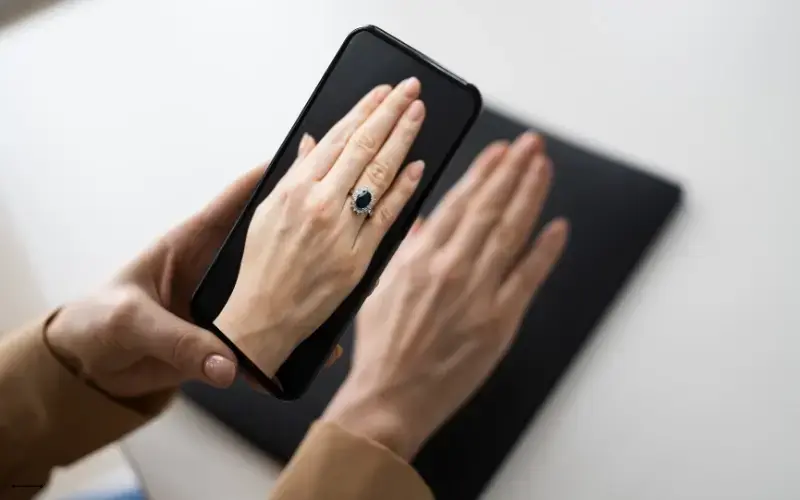
Trying on a product has always been one of the most personal points of connection between a brand and its audience. With AR, that moment of discovery can now happen anywhere, instantly, and without inventory. Using just a smartphone, attendees can slip on virtual sunglasses, experiment with makeup shades, or try on a branded hoodie, without ever entering a dressing room.
For events specifically, these experiences can also double as shareable moments, such as brandable AR photo booth props. These props enhance visibility across social platforms while providing guests with something fun and personalized to take home.
The camera becomes the mirror, and the possibilities become endless. These try-on experiences are lightweight to launch, deeply personal, and easily shareable, making them a perfect fit for brand activations, pop-up shops, and lifestyle expos.
Social Media Integration and Filters
In the age of scrolls, swipes, and stories, a powerful event moment doesn’t just live on stage; it lives in the feed. AR makes that transition seamless by turning social media into a canvas for real-time, branded interaction.
With a simple tap, attendees can unlock custom face filters, interactive backdrops, or augmented effects tied to the event theme, all through platforms they already use like Instagram, TikTok, and Snapchat. Tools like Snap’s Lens Studio and Meta’s Spark AR make it easy for event marketers to create custom filters that reflect brand identity, celebrate milestones, or gamify social participation. This is where AR meets UGC (user-generated content) in its most vibrant form. Whether it’s a selfie filter that applies festival glitter or an effect that places attendees on a branded virtual stage, these tools help make memories and marketing shareable at scale.
For influencer-led campaigns or experiential launches, smart glasses like Ray-Ban Meta let creators capture hands-free, POV content for Instagram and TikTok. The result is raw, immersive footage that pulls viewers into the moment. Brands can use this format to promote activations, partner with creators for real-time content, or include branded glasses in influencer kits to spark on-site buzz.
Hybrid and Virtual Event Integration
As events continue to blur the lines between physical and digital, the question isn’t just how to include remote attendees, but how to immerse them. AR offers a compelling answer: make the digital feel tangible, no matter where the audience is tuning in from.
Through WebAR experiences, attendees can scan a QR code during a livestream, click a link from a virtual trade show booth, or open a branded email and instantly bring content into their own physical space. A 3D product demo on their coffee table, a keynote quote hovering above their desk, or a sponsor content banner animated right on their wall, all delivered through the smartphone camera.
These experiences can also be layered into hybrid event booths or sponsor activations. A remote visitor exploring a virtual expo can point their device at their own environment and see the same interactive objects that in-person guests are engaging with. It levels the playing field, turning viewers into participants. Across most hybrid formats, mobile AR remains the strongest link, connecting people to content and bridging the physical and virtual worlds in a way that feels fluid, fast, and frictionless.
Future Outlook and Challenges
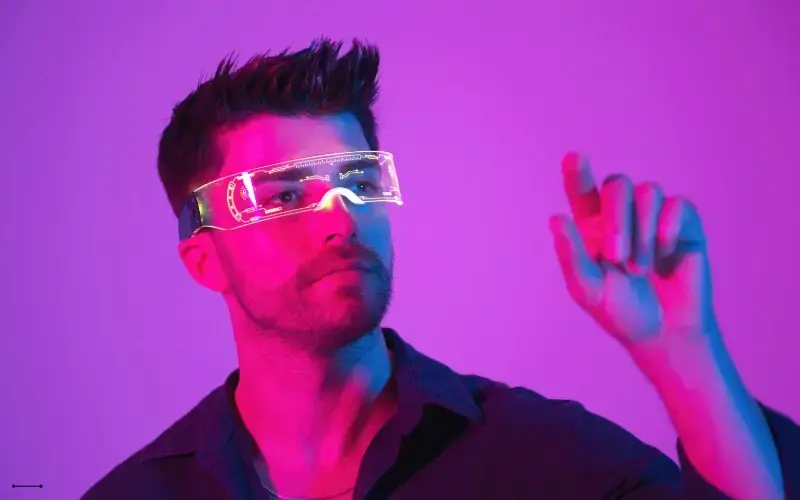
AR is set to play an even bigger role in event innovation, enabling smarter storytelling, hybrid engagement, and real-time personalization. As hardware evolves and creative tools become more accessible, the technology will move from optional to expected.
While smartphones dominate current AR deployments, AR glasses are evolving steadily behind the scenes. Devices like Snap Spectacles, Meta’s Ray-Ban, and enterprise-focused smart glasses such as Vuzix and RealWear are introducing hands-free overlays, voice-guided interaction, real-time translations, and even AI-enhanced prompts that can respond to the environment in meaningful ways. All of which is laying the groundwork for more intuitive and immersive experiences.
The potential is clear: hands-free, always-on AR that blends into the user’s workflow or experience without interrupting it. For events, this opens up possibilities such as real-time speaker bios during keynotes, facial recognition-enabled networking, guided backstage tours, or live event sponsor messaging triggered by spatial movement.
While not yet mainstream, due to cost, comfort, and battery life constraints, these glasses signal where immersive tech is headed. For now, they remain best suited for VIP experiences, executive demos, or highly curated activations. But as form factors shrink and UX improves, they may eventually redefine how we perceive and interact with the physical world at events through AR.
The Future of Events Is Layered
As attendee expectations evolve, static experiences no longer cut it. Augmented Reality is changing the game, adding interactive layers that make events feel more alive, more personal, and way more memorable. You don’t need custom headsets or costly hardware to get started. With just a smartphone and a smart idea, you can bridge the gap between physical and digital in powerful new ways.
If you're looking to host virtual events that go beyond the basics, Remo is designed for connection, engagement, and immersive interaction. While Remo doesn’t natively support AR, it provides the foundation, including custom floor plans, real-time networking, and interactive presentations, to layer on emerging tools like WebAR and elevate your event experience. Book a demo today and build immersive, future-ready events with Remo.
Like what you read? Learn more about how AR, VR, and AI are redefining events in 2025 by downloading the latest State of AI and XR in Events report by Events.com; free and full of practical insights.
Frequently Asked Questions about How Augmented Reality is used in Events
1. How is AR used at events?
AR helps with wayfinding, interactive product demos, gamification, and more, making the attendee experience more engaging and personalized.
2. Do I need special equipment to use AR at events?
No. Most AR experiences today work through smartphones or tablets using just a browser or an app, no headsets required.
3. Can I use AR for virtual events?
Yes. You can integrate AR through WebAR tools that work alongside virtual event platforms, allowing remote attendees to interact with 3D content at home.
4. How much does it cost to add AR to an event?
It depends on the complexity. Simple WebAR experiences can be affordable, while advanced custom builds or AR mirrors may require a bigger investment.







.webp)



